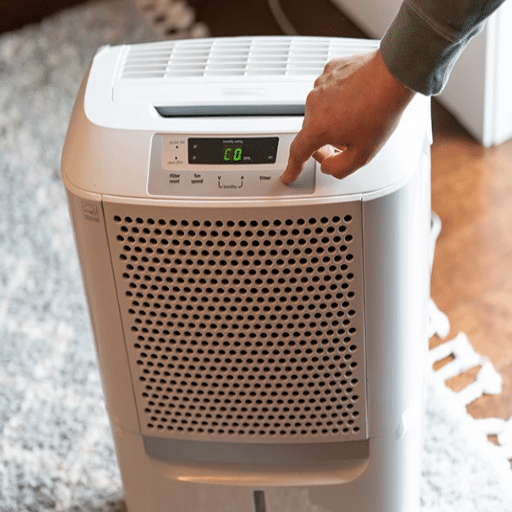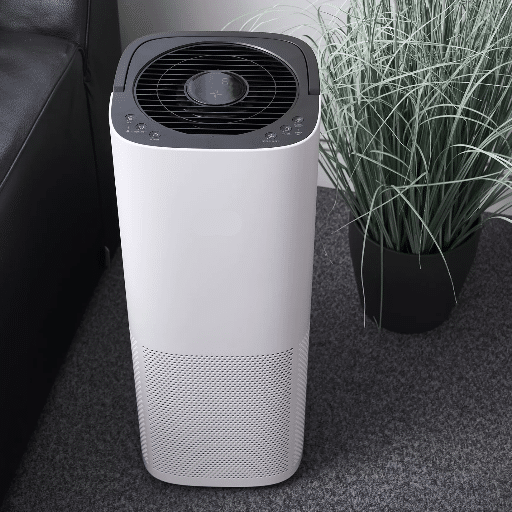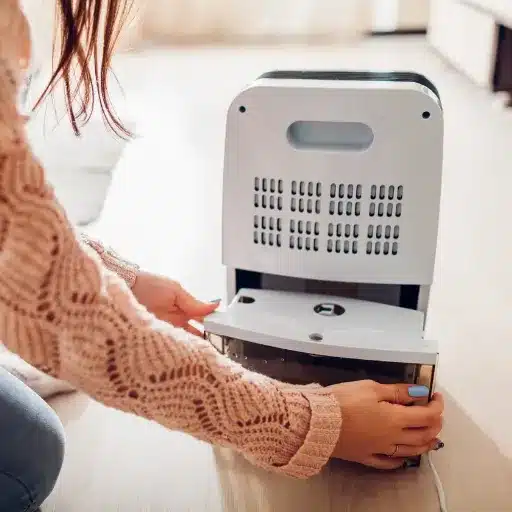The overabundance of humidity in closed spaces is associated with several issues such as fostering mold, poor air quality, and uneasiness. To solve these problems, most households purchase dehumidifiers to control the indoor humidity level. However, individuals spending on these units and those who own them worry about how much power these devices consume. Are dehumidifiers major electricity users and expensive devices, or economical ones that do not cost a fortune to keep running? Questions such as these and others are answered in detail as this article analyzes dehumidifier energy usage, including but not limited to power and operational costs, use frequency, and energy bills. Knowing these aspects enables readers to determine whether a dehumidifier is practically useful and affordable in a particular household.
How Do Dehumidifiers Consume Power?
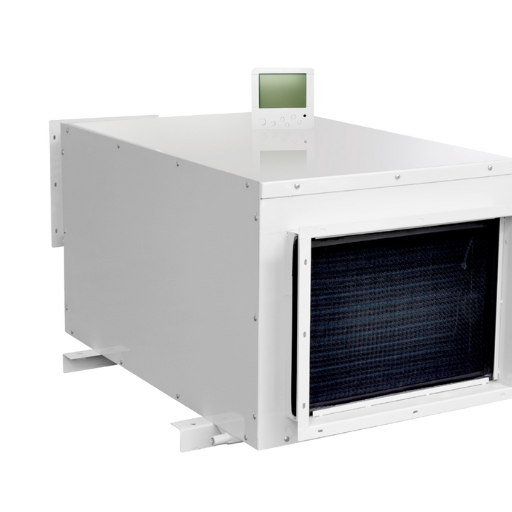
The compressor, fan, and other assemblies essential for moisture removal are among the components that use power in dehumidifiers. Air circulation within the unit is performed by a fan, which supports the dehumidifying process, while the compressor compresses refrigerant to achieve a lower dew point of the air, allowing condensation to occur on the evaporator coils. The energy consumption of a dehumidifier is linked to its physical dimensions and dehumidifying capacity as well as the duration of time the device is used. Higher capacity units are likely to use more power because they have to operate in larger rooms or in spaces with higher humidity levels. Moreover, the room’s relative humidity and temperature affect how well the device performs. Exceeding power usage while performing efficiently can be as a result of using advanced models equipped with energy efficient features.
Mechanics of Dehumidifier Electricity Consumption
Dehumidifiers work by sucking moisture out of the air using either a cooling cycle or a desiccant method depending on the type of device. The refrigerant – based dehumidifier packs contain ‘coils’ and a ‘compressor,’ which work to lower the temperature of the air being drawn in under the dew point. This turns the water vapor in the air to liquid form, which is then collected and drained from the system. During this process, individual devices have key components which include the extraction capability of the unit (in pints or liters per day), power consumption (standard household units consume between 300 to 700 watts), and the temperature points in which the unit can effectively operate (typically 5°C to 35°C). The Desiccant unit, on the other hand, uses a hygroscopic material which separates moisture from the air. This unit requires heat for regeneration and energy targets vary on the heater unit’s efficiency.
Performance efficiency is tracked through an Energy Factor (EF) measured in liters water collected to kilowatts (L/kWh). Models with high-EF ratings are more effective and typically have values greater than 1.5 L/kWh. Other factors which impact efficiency include the rate of airflow (usually quantified in Cubic Feet per Minute, CFM). In mounting an air processor, intake air circulation should match the rated airflow of the appliance. Be sure to factor in the amount of humidity loosely measured in RH, along with the size of the room in order to optimize energy usage efficiently.
The Function of a Compressor and Fan in Power Usage
The operations of the compressor and fan are critical in the overall electricity consumption of dehumidifiers. The most energy-consuming device is the compressor, which compresses the refrigerant in order to facilitate condensation of moisture. Its power requirement is model and capacity dependent, generally within 300 and 700 watts. Moreover, the high relative humidity (RH) or low ambient temperature environments demand more energy due to their effectiveness. Therefore, higher capacity compressors require additional energy consumption.
On the other hand, the role of the fan is to allow air to flow through the dehumidifier’s coils and remove the moisture while circulating air throughout the dehumidifier. The fan has a power requirement of approximately twenty to fifty watts and is lower than that of the compressor more often than not. The fan’s energy consumption rate is mainly associated with the airflow rate, defined in terms of cubic feet per minute (CFM), which determines the volume of air processed in a certain period. A well-designed system would provide airflow commensurate with compressor capacity to enhance condensation efficiency without using excess energy.
Choosing the types of units with variable-speed compressors or fans could be beneficial because they can change their output relative to humidity levels, thus lowering average energy consumption. Maintaining an Energy Factor (EF) above 1.5 L/kWh for both components also ensures better performance while using less electricity. Adjusting the ratios of compressor cycles to fan speeds could be crucial in achieving efficient and cost effective operation.
Differences in energy consumption between different types of dehumidifiers
Due to the operation of their compressors and refrigerant systems, refrigerant-based dehumidifiers consume more energy than Desiccant dehumidifiers. On average, refrigerant models operate on 300 to 700 watts, depending on their size and capacity. Larger units are generally more power hungry, designed to have higher extraction rates (measured in pints per day) than smaller ones. Their Energy Factor (EF) ranges within 1.4 to 2.0 L/kWh.
Desiccant dehumidifiers are less efficient for most applications but more useful in colder environments. These units typically work on powers ranging between 200 and 600 watts and achieve an EF of approximately 0.8 to 1.4 L/kWh. However, they require a heating element to regenerate the desiccant material instead of using a compressor, which increases overall energy usage.
Peltier dehumidifiers, or thermoelectric dehumidifiers, work at 20 to 70 watts for small operations. Unlike refrigerant dehumidifiers, these have a more user-friendly interface. That being said, the moisture removal capacity is quite limited. The EF values are underwhelming too, not surpassing the 0.5 L/kWh mark.
If we are being frank, the energy usage, consumption, and efficiency of a dehumidifier depend heavily on its design, capacity, and many other factors. To cut energy costs, one must choose the correct type for their specific poor environmental conditions.
What Affects the Electricity Usage of a Dehumidifier?
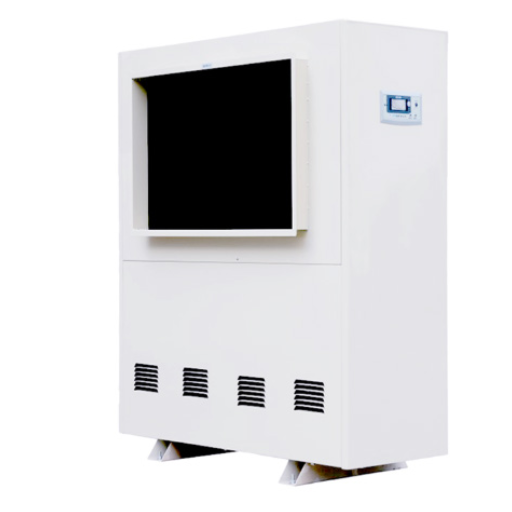
Some factors affect a dehumidifier’s electricity consumption. To begin with, the unit’s size and capacity are of utmost importance – big models intended for high humidity regions tend to use more power. Second, performance is influenced by the relative humidity and temperature of the surrounding environment. High humidity or low temperature may force the unit to operate for more extended periods or for greater intensity. Third, the model’s energy efficiency rating, for example energy star rating, has a direct effect on the amount of electricity consumed while removing moisture. Lastly, user factors such as settings, runtime, filter cleanliness maintenance, etc., all add up to electricity consumption. Power usage can be significantly minimized by properly correlating a dehumidifier’s specifications with the surrounding conditions and performing proper maintenance procedures.
Size of the Dehumidifier and Why It Factors Into Energy Efficiency
The issue of energy efficiency is decided by the size of the dehumidifier, which doesn’t just dictate the unit’s power but also how well it controls the humidity of a particular area. The size of the Dehumidifier, in most instances, is determined by the moisture removal capacity of the d, which is expressed in terms of pints per day (PPD). For example, a 22-pint dehumidifier is appropriate for cramped quarters and a 50-pint one is made for humid or bigger rooms. Systems that are too small for the room they are supposed to be in risk working almost non-stop, which will hurt power consumption. Interruptible systems are oversized and can efficiently and quickly eliminate moisture, drastically reducing the time and energy spent.
The most important technical parameters that should be evaluated include the unit’s capacity, Energy Factor (EF), and relative humidity setpoint. A model’s energy usage is approximate measure of its energy efficiency and is expressed in liters of water removed per kilowatt hour. For Example, an Energy Star rating system dehumidifier should work more efficiently and carry a higher EF rating, translating into lower electric bills. In addition, it is essential to add the size of the said dehumidifier to the volume of the room and measure of humidity to achieve the best results without wasting energy. Optimization of some of these elements improves both effectiveness and efficiency in moisture control.
Economic Variables Affecting Power Consumption
Alongside these factors, the ambient temperature, room size, and starting humidity influence a dehumidifier’s power consumption. It is generally true that higher average room temperature translates to better unit efficiency while colder room temperatures typically produce a converse relationship between the unit’s performance and average temperature, such as with standard compressor units. Larger spaces also require more energy as the unit needs to run for extended periods to lower moisture levels within the space adequately. In addition, areas with high relative humidity levels will use more power as the dehumidifier will need to run longer to reach the required setpoint. Finally, properly placing and maintaining the dehumidifier and proper area sealing can greatly reduce energy inefficiencies from inappropriate usage.
Are the Settings and Duration of Dehumidifier Use Important? Yes, Quite A Bit
The setting and the duration of the use of the dehumidifiers depend on several factors like humidity indoors, size of the room, and other physical conditions. Hence, in severely moist or humid places, a more sensible approach would be to run the dehumidifier for at least twelve hours in a day. For all appliances, optimal operation is essential. Ensure that the humidity level is kept between 30 to 50 percent. Some devices come with built-in hygrometers, and some need an external gauge. The progress should be monitored, whichever method is used. This is especially important in places vulnerable to too much moisture, such as basements. In other regions, it is possible to conserve energy by reducing the runtime during dry spells. Practicing routine humidity checks makes it easier to operate the system and manage expenses.
Are Some Dehumidifiers More Energy-Efficient Than Others?
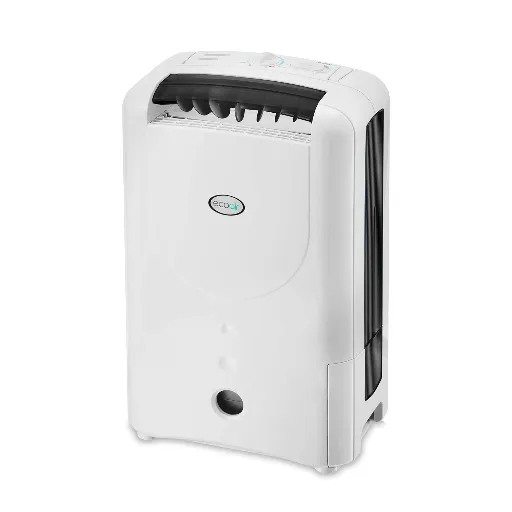
Yes, certain dehumidifiers do use less energy than others. Energy-efficient models often have energy-saving certifications like the ENERGY STAR, so we know these units use less electricity while maintaining effective functioning. Newer technologies, like advanced compressor systems, auto shut-off, and variable fan speed settings, help lower energy consumption even further. Moreover, powering a dehumidifier sized appropriately to the area reduces power wastage. With such an initiative, significantly reduced energy expenses can be achieved without sacrificing effective humidity management.
Energy Star-Rated Devices and Their Benefit
Dehumidifiers are given ratings based on how well they use energy, and these advanced models are engineered to have better energy performance than standard models. Compliance with these standards requires consumption that is, on average, 15 percent below industry benchmarks while performing optimally. This performance is achieved through improved compressor systems and fan speeds. For instance, 50-pint Energy Star dehumidifiers average 600 to 700 Watts of usage.Power usage for non-star models exceeds this range, so these models are assumed 50-pint non-star usage models.
Additionally, features like auto shut-off and precision humidity controls are very beneficial to reducing energy expenditure. These features allow the device to turn off automatically during the desired humidity level, preventing overuse. Choosing room sizes to set capacity helps the device stay within ideal expenditure ranges and helps control moisture, reducing expenditure.
How Modern Dehumidifiers Consume Less Power
By integrating energy-saver compressors, modern remote controls, and improved airflow techniques, modern power saving dehumidifiers achieve their energy efficiency. All these technologies work in tandem to attain adjustable and set optimal humidity levels without the dehumidifier working hard, making the device energy efficient when not in high demand. Such technologies include fan speed controllers, humidistats, and shutoff devices, which operate on an as-needed basis, preventing the device from wasting energy. These features help to better power usage by only operating when needed. Targeted action makes these devices more efficient and makes electricity management easier.
Features that Aid in Energy Conservation with Dehumidifiers
The latest features and technological advancements dictate energy consumption with dehumidifiers most, and above all, dehumidifiers should receive Energy Star certification, a hallmark of required energy efficiency. High-efficiency compressors are a worthwhile investment as they decrease operational costs by consuming less power while still performing optimally. Variable-speed fans are also advantageous as they allow a modification of airflow conditions to the environment’s precise needs, saving energy.
Cleary, intelligent humidistats are another critical feature that directly improves energy efficiency. These sensors track surrounding humidity conditions and soften or increase the dehumidifier’s operations to the ideal level without wasting energy. Additional energy consumption losses can be avoided with auto defrost as it prevents frost formation in cold environments ensuring consistent use. Furthermore, using environment-friendly refrigerants like R32 helps reduce the adverse impact on the ecosystem while being efficient. Finally, the Pints per Day (PPD) output of the dehumidifier must match the size of the space in order to achieve efficiency as large and small units alike can needlessly use a lot of energy.
How Much Does It Cost to Run a Dehumidifier?
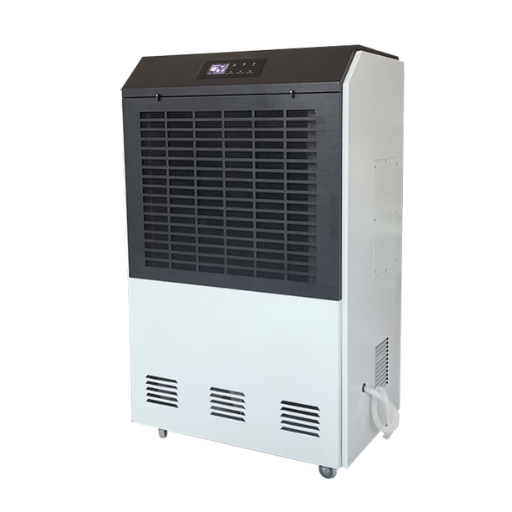
How much it costs to use a de-humidifier depends on how efficient the specific unit is, the cost of electricity in your area, and how much you use it. Dehumidifiers cost between 300 and 700 watts to operate each hour and energy efficient models tend towards the lower end of the scale. To calculate the electric bill, multiply the wattage of the unit by the number of hours turned on per day and divide that by a 1000 to get kWh. For example, a 500 watt unit dehumidifier using 8 hours a day at a 15 cent kwH rate should cost around $0.60 each day. Subsequently, multiply this figure by the rate in your area to get the daily expense. Using the appropriate sized unit for the room and cleaning your filters are both good practices to keeping your maintenance cost low.
Estimating daily electricity consumed and its expenses
To establish how much electricity is being consumed daily, I first take note of the dehumidifier’s wattage. I multiply this value by the hours I operate the device daily. Subsequently, I divide this figure by a thousand to change it to kilowatt hours (kwh). The cost is determined by multiplying the kWh to my area’s electricity rate. For example, if my dehumidifier is 400 watts and I use it for 10 hours a day as well as the current electricity rate in my area is $0.12 per kwh, the calculations will be (400 x 10) / 1000 = 4 kwh, and 4 x $0.12 = $0.48 per day. These numbers depend on how well my device is made and my usage patterns.
Comparing costs of running a dehumidifier vs air conditioning units and fans
The electricity needed by dehumidifiers is less than that consumed by air conditioning units because their main function is to take recess moisture rather than cooling the air. The energy usage of air conditioning units is high because of the deficit in the range of compressors because the air conditioning units simultaneously perform cooling and dehumidifying. In contrast, fans are inexpensive to operate since they are highly energy efficient, but appropriate to use for humidity control as they do not take out moisture; they merely circulate air.
Cost Estimation Techniques for Operating the Dehumidifier
Understanding how much energy your dehumidifier consumes and the duration it operates is necessary in calculating how much it costs to run. Usually, the wattage of dehumidifiers is marked on the device or documented in the manual, and for household ones, it usually ranges from 300W to 700W. To convert energy consumption into kWh, apply the following formula:
Energy consumption (kWh) = (Wattage x hours of use)/1000
When you have the kWh value, you can multiply it by the rate that energy is sold in your region, which will give you the approximate cost for consumption. For instance, if an average dehumidifier takes 500 watts and it is used for 8 hours a day, it will result in energy usage equalling (500 x 8) divided by 1000 which ultimately gives 4 kWh. If the rate for energy consumption in your area is $0.15, the running cost will be (4 x 0.15) = $0.6.
The main technical parameters include dehumidifier wattage, operating hours, and local electricity billing. One may also consider the performance data of the equipment, such as the volumetric water extraction rate in liters per kWh. Environmental-friendly versions, especially those endorsed by programs such as ENERGY STAR, may improve the cost efficiency of operations by a small margin for their service life. Lastly, ensure that your dehumidifier is always in good working order, as a clean filter and unobstructed airflow promote energy efficiency.
Can You Reduce a Dehumidifier’s Electricity Consumption?
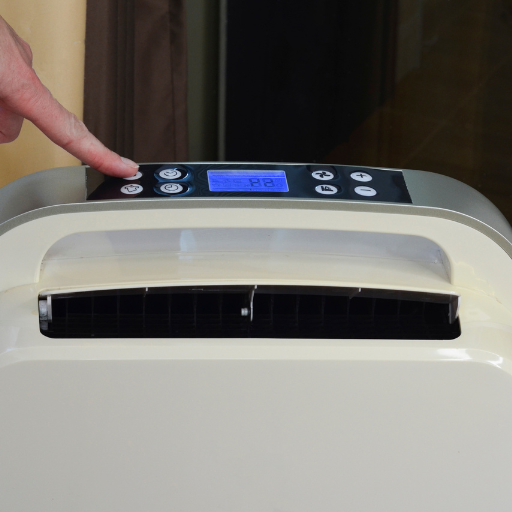
Indeed, the measures employed to lower the electricity usage of a dehumidifier can vary. Begin by ensuring the room is properly sealed to minimize the entry of external moisture into the area, since such humidity would make the dehumidifier work harder. Operate the dehumidifier when it is required and set it to maintain an optimal humidity level, usually around 50 percent, so as not to overuse it. Also clean and maintain the unit regularly, including cleaning the filter, as this will increase unit efficiency. Moreover, combining the dehumidifier with other methods such as proper ventilation, exhaust fans, and insulation can help ease the workload on the device and thus decrease the amount of energy used.
Best Settings That Achieve Good Performance with Minimum Energy Use
Energy consumption needs to be minimized while the performance is kept high, ultimately a matter of design. Set the dehumidifier’s humidistat to 30-50% depending on the region and activities. If these limits are not set, it could lead to excessive energy use. Try to maintain the temperature of the room between 65°F and 85°F. Any lower temperature can result in frost forming on the coils and reduce efficiency. Air filters must be cleaned/replaced every two weeks or as needed based on the device’s manual. This leads to unimpeded airflow. To ensure that a proper flow of air is circulated, the dehumidifier should be at least 6 inches away from the wall. If the unit has a fan with adjustable speeds, use the lowest speed when the humidity levels are low to save energy. Buying energy star rated dehumidifier units can guarantee savings on the electricity bill while still assisting with adequate dehumidification.
Timing your dehumifier usage for maximum efficiency
For the time of operation, a dehumidifier is most effective when used after showers or meals. When the appliances are not in use, set timers to coincide with the most humid hours of the day instead of running them constantly. Keep the unit turned off during the cooler night hours unless dehumidification is obligatory. When there is a 50% humidity level indoors, activate the dehumidifier to balance indoor humidity and energy expenditure. Tactics like smart plugs, timed plug sockets, or even specific dehumidifier phone apps can be helpful to as well. This strategy drastically lowers energy consumption while still maintaining humidity levels.
Regular maintenance tips to ensure energy efficiency
- Set intervals for replacing the dehumidifier filter as clean filters promote proper airflow at lower energy levels.
- Check the water collection tank regularly for microbial growth. If any is found, thoroughly wash the tank to restore the unit’s efficiency.
- Inspect the dehumidifier coils periodically for dust buildup, as it makes heat exchange more difficult and reduces energy efficiency.
- It is recommended that the dehumidifier be placed in the middle of the room, away from walls, to allow free airflow and maximize efficiency. Blocked airflow hinders effective operation.
- Inspect the parts for signs of wear and tear, such as seals or fans, and replace any not operational. This is critical to achieving typical performance.
How Do Dehumidifiers Compare to Other Appliances in Energy Usage?
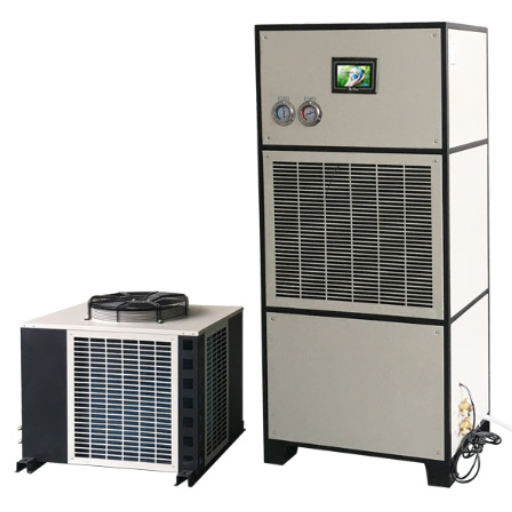
Dehumidifiers are designed for specific levels of moisture, and as a result, they usually use less energy than dryers or air conditioning units. On the other hand, CFM output, how often the device is used, and the area being dehumidified can affect the overall energy consumption. For instance, smaller dehumidifiers that are used at home or in offices are estimated to use between 300- 700 watts per hour. This is significantly lower than other devices such as refrigerators or de-hydration heaters. Running the machine in a sealed environment, allowing it to operate at peak humidity, and using high-scale models can lower energy usage while significantly improving efficiency.
Dehumidifiers vs. air conditioners: Which one is more cost-effective?
Dehumidifiers consume comparatively lower power than air conditioners. This is because air conditioners remove humidity and cool the air. While a portable dehumidifier can consume 300 to 700 watts, the A.C. can draw power from approximately 500 to 1500 watts. Cooling systems are far more powerful and have an average consumption of 2000 – 5000 watts. The difference is in the operation. Dehumidifiers extract moisture from air by circulating it over cooled coils, while air conditioners use complex refrigerant cycles to cool a room. Energy-efficient cooling units have a significantly better EER and SEER ratings, while dehumidifiers do not have these requirements. This is why air conditioners are more energy demanding than dehumidifiers of equal usage.
Do Electric Dehumidifiers More Efficiently Than Heating
Dehumidifiers are relatively less energy-consuming than heating systems. Electric resistance heaters, in particular, consume anywhere from 1,000 to 5,000 watts or more, depending on the space they are designed to heat. Electric furnace or heat pump-powered central heating systems take even more power. As outlined earlier, normal dehumidifiers take only 300 to 700 watts for comparison.
This is mainly attributed to the basic working principles of these systems. Due to the nature of work of heating systems, they have to expend significant levels of energy first to create and then redistribute the needed heat indoors to sustain constant temperatures. However, dehumidifiers are built to condense water vapor on cooled coils to get rid of moisture in the air and so they only use lower-strength processes. To put it in perspective, heating systems tend to have a high Coefficient Of Performance or, in the case of heat pumps, a lower HSPF which signifies negative rates of efficiency where high values are better.
Indeed, both systems contribute to comfort and air quality, but their energy consumption cuts are on a different scale. The difference is more pronounced in colder seasons because heating—by its nature—has to be used at all times, while dehumidifying is use-adjusted.
An Overview of Household Appliances Power Consumption Throughout the Year
The energy consumption of household appliances changes from one season to another because of changes in use patterns resulting from lifestyle and environmental factors. For instance, during summer, the functional use of air conditioning, refrigeration, and even fan systems tends to be on the higher ranges of effective output. On the other hand, the winter season stands to have a worrying picture with heating, water, and even dryer systems almost always going on. Energy efficient appliances, lower thermostat settings, and even curtailing their functional usage tend to raise their scope of power economy. Furthermore, regular cleaning of filters and performing insulation checks can increase appliance operation efficiency and thus decrease energy consumption.
Reference sources
Frequently Asked Questions (FAQs)
Q: How much electricity does a dehumidifier use?
A: The amount of electricity a dehumidifier uses depends on its size and efficiency. On average, a residential dehumidifier consumes between 300 to 700 watts of electricity per hour. A 50-pint dehumidifier, which is a common size for home use, typically uses around 500 watts. Energy-efficient models may use less energy, while larger units or those operating in very humid conditions might consume more.
Q: What is the cost of running a dehumidifier?
A: The cost of running a dehumidifier varies based on your local electricity rates and how often you use the device. Assuming an average electricity rate of $0.13 per kWh and a 500-watt dehumidifier running for 8 hours a day, the daily cost would be around $0.52. This translates to approximately $15.60 per month. However, energy-efficient dehumidifiers can help reduce these costs.
Q: How do dehumidifiers work to improve indoor air quality?
A: Dehumidifiers work by drawing in moist air, cooling it to condense the moisture, and then reheating the air before releasing it back into the room. This process removes excess moisture from the indoor air, which helps prevent the growth of mold and mildew, reduces musty odors, and improves overall indoor air quality. By maintaining optimal humidity levels, dehumidifiers create a more comfortable and healthier living environment.
Q: Will using a dehumidifier significantly increase my electric bill?
A: While a dehumidifier does consume electricity and will add to your electric bill, the increase is generally modest for most households. The exact impact depends on factors such as the unit’s wattage, how often it runs, and your electricity rates. Using an energy-efficient dehumidifier and operating it only when necessary can help minimize the impact on your electric bill while still enjoying the benefits of improved indoor air quality.
Q: How can I reduce the amount of electricity my dehumidifier uses?
A: To reduce your dehumidifier’s energy use, consider the following tips: 1) Choose an energy-efficient model with an ENERGY STAR certification. 2) Use the correct size dehumidifier for your space to avoid overworking the unit. 3) Maintain proper air circulation in your home to help the dehumidifier work more efficiently. 4) Clean the filters regularly to ensure optimal performance. 5) Use the built-in humidistat to set an appropriate humidity level, so the dehumidifier doesn’t run constantly.
Q: Does the wattage of a dehumidifier affect its performance?
A: The wattage of a dehumidifier is related to its capacity and energy consumption, but it doesn’t directly indicate performance. A higher wattage usually means the unit can remove more moisture from the air, but it will also use more electricity. However, energy-efficient dehumidifiers can often achieve similar performance levels with lower wattage. When choosing a dehumidifier, consider factors like room size, humidity levels, and energy efficiency ratings rather than focusing solely on wattage.
Q: How does humidity affect a dehumidifier’s electricity consumption?
A: Higher humidity levels can cause a dehumidifier to use more electricity because it has to work harder to remove excess moisture from the air. In very humid conditions, the dehumidifier may run for longer periods or cycle on more frequently, increasing its overall energy consumption. Conversely, in less humid environments, the dehumidifier will cycle on less often and use less energy. Managing indoor humidity levels and using your dehumidifier efficiently can help optimize its electricity use.

